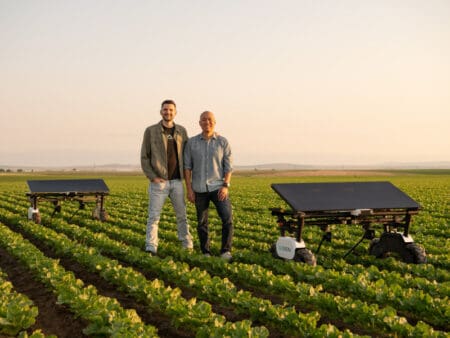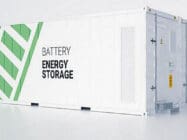
Energy management in smart homes, mobile storage on US railways and energy harvesting innovations under development are on the week’s technology radar.
Energy management in smart homes
With energy management becoming integrated into popular home offerings, such as Samsung’s SmartThings app which can connect to users’ smart meters, the concept of the smart home is fast gathering ground.
However, many remain unaware of its potential, according to Samsung. In a recent survey of British consumers, the tech giant found that almost three-quarters were unaware of being able to place smart buttons around the home to allow one to easily turn on or off any connected appliances and two-thirds were unaware of being able to integrate the management of energy devices or create a safer home environment.
Nevertheless, the survey found that after reading more information about heat pumps, almost one-third said they were likely to consider installing a heat pump in the next 12 months.
Have you read?
100 innovations for smart electrification – IRENA
Energy Transitions Podcast: Redefining resilience for a modern power system
This is broadly in line with the four in ten found in another survey to be considering purchasing energy-efficient solutions, such as solar panels and battery storage.
James Kitto, Vice President for Samsung UK Mobile said there’s never been a more revolutionary time for connected living.
“Smart home technology is more sophisticated and intuitive than ever before, empowering people and improving lives in ways unimaginable even five years ago – from breaking down barriers around accessibility, enabling consumers maintain healthier lifestyles and helping save money, the possibilities are endless.”
Rail-based mobile storage
In addition to fixed storage, interest is growing in the potential of mobile storage, particularly to support the grid in the face of the more extreme weather events that are occurring.
The question is how to deliver it and now a group of scientists in the US at the Lawrence Berkeley National Laboratory have suggested that the country’s rail system could serve as a nationwide backup transmission grid over which containerised batteries could be shared among regions to meet demand peaks, relieve transmission congestion and increase resilience in cases of low-frequency high-impact events.
According to the scientists writing in the journal Nature Energy, compared to new transmission lines and stationary battery capacity, deploying ‘rail-based mobile energy storage’ as they term it could save the power sector upwards of $300/kWyear and $85/kWyear, respectively.
They estimate that a single train could carry 1GWh of battery storage, and that batteries could be moved between most ISO regions within a week without disrupting regular freight operations.
They also note that there are no known technical barriers to excluding such mobile storage from grid participation.
However, addressing interconnection challenges and revising regulatory frameworks would be necessary for deployment at scale.
Energy harvesting for remote power
Energy delivery for services in inaccessible and remote locations can be challenging, especially with the need for sustainability and the move away from traditional sources such as diesel power.
In the clean water industry, the baseline solution for powering the IoT revolution has been low capacity, single use, unrecyclable batteries.
But British startup Vysion Technologies believes the answer lies in energy harvesting.
With an award from the national water sector regulator Ofwat, Vysion Technologies is aiming to develop an advanced micro-turbine design that harvests energy from the water flow.
Another company that has been awarded funding from Ofwat is the Fish Friendly Hydropower Company, which is developing a pico power floating hydropower turbine generator made from high-density recyclable polymer
The PicoStream as it is named is intended for easy installation in remote locations.
Depending on progress in this first phase, these companies should be in line for funding to go on to develop and pilot their concepts.
Meanwhile the US startup Aigen has developed a solar powered robotics platform that can weed farmers’ fields and provide real time data on the status of the field and the crops therein.
According to Aigem such is the demand among agriculturalists that 2024 and 2025 preorders for the service sold out in 1 day!
“Farmers tell us again and again that weeds are the number one problem they face. So, that’s where we’re starting: developing a solution for farmers to immediately reduce their costs and get rid of weeds, all while growing healthier crops,” said Kenny Lee, Aigen’s co-founder and CEO.








